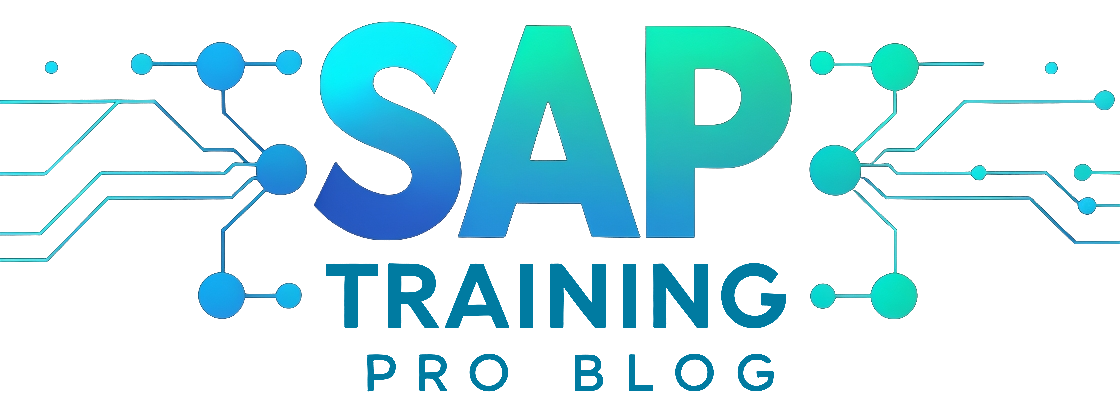Ensuring Success: Key Factors for a Seamless SAP Implementation

Ensuring Success: Key Factors for a Seamless SAP Implementation
Table Of Content
This article discusses the essential factors that contribute to a successful implementation of SAP, a leading enterprise resource planning software.
Thorough Planning and Preparation
Proper planning and preparation are crucial for a seamless SAP implementation. Before embarking on the implementation process, it is essential to conduct a comprehensive analysis of the organization’s current systems and processes. This analysis helps identify areas that need improvement and sets the stage for a successful implementation.
Defining clear goals is another key aspect of thorough planning. It is important to have a clear understanding of what the organization aims to achieve with the SAP implementation. Whether it’s streamlining operations, improving efficiency, or enhancing customer experience, having well-defined goals ensures that the implementation stays focused and aligned with the organization’s objectives.
Creating a detailed project plan is the next step in the planning and preparation phase. This plan outlines the timeline, tasks, and resources required for the implementation. It serves as a roadmap for the project, guiding the team through each stage and ensuring that all necessary steps are taken to achieve a successful implementation.
In summary, thorough planning and preparation are essential for a seamless SAP implementation. Conducting a comprehensive analysis, defining clear goals, and creating a detailed project plan lay the foundation for a successful implementation that meets the organization’s needs and objectives.
Effective Change Management
Successful SAP implementation requires effective change management strategies. It is essential to engage stakeholders, provide training and support, and manage resistance to change. By involving stakeholders throughout the implementation process, their input and feedback can be incorporated, ensuring a smoother transition and greater acceptance of the new system.
Training and support are crucial for helping employees adapt to the changes brought about by SAP implementation. By offering comprehensive training programs and ongoing support, organizations can equip their workforce with the necessary skills and knowledge to effectively utilize the new system, minimizing disruptions and maximizing productivity.
Resistance to change is a common challenge during any implementation process. It is important to address concerns and fears, communicate the benefits of SAP, and provide a supportive environment for employees to voice their opinions and express their apprehensions. By managing resistance effectively, organizations can overcome obstacles and foster a positive attitude towards the implementation.
Strong Leadership and Project Management
Strong leadership and effective project management are crucial for the successful implementation of SAP. Skilled leaders are essential in guiding the project and ensuring that it stays on track. They provide direction, make critical decisions, and motivate the team to achieve the desired outcomes.
Establishing a project team is another key aspect of strong leadership and project management. The team should consist of individuals with diverse skills and expertise who can contribute to different aspects of the implementation process. This ensures that all necessary tasks are assigned and completed efficiently.
Effective communication and coordination are also vital for a seamless SAP implementation. Leaders and project managers must establish clear lines of communication and ensure that all team members are well-informed about the project’s progress. Regular meetings, updates, and feedback sessions help in maintaining a cohesive and collaborative environment.
In summary, strong leadership and project management are essential for the successful implementation of SAP. Skilled leaders, a well-structured project team, and effective communication and coordination are key factors that contribute to a seamless implementation process.
Thorough Testing and Quality Assurance
Thorough testing and quality assurance are critical to a seamless SAP implementation. It is essential to conduct comprehensive testing to ensure that the system functions as intended and meets the organization’s requirements. This involves testing various scenarios and functionalities to identify any issues or bugs that may arise during the implementation process.
Identifying and resolving issues promptly is crucial to maintaining the integrity and effectiveness of the SAP system. By addressing issues in a timely manner, potential disruptions and delays can be minimized, allowing for a smoother implementation process. It is important to have a dedicated team responsible for troubleshooting and resolving any problems that arise during testing.
Additionally, ensuring data accuracy and integrity is paramount in a successful SAP implementation. This involves verifying that data is entered correctly, validating data integration across different modules, and establishing data governance practices. By maintaining accurate and reliable data, organizations can make informed decisions and optimize their business processes.
Continuous Monitoring and Evaluation
Continuous monitoring and evaluation are essential for the long-term success of SAP implementation. It is crucial to regularly monitor the performance of the system to ensure that it is functioning optimally and meeting the organization’s needs. This involves tracking key metrics, such as system response time, data accuracy, and user satisfaction. By closely monitoring these indicators, any potential issues or bottlenecks can be identified and addressed promptly, minimizing disruptions and maximizing efficiency.
Gathering user feedback is another critical aspect of continuous monitoring and evaluation. By actively seeking input from end-users, organizations can gain valuable insights into their experiences with the SAP system. This feedback can help identify areas for improvement, such as user interface enhancements or additional training needs. By incorporating user feedback into the evaluation process, organizations can continuously refine and enhance the SAP implementation to better meet user expectations.
Furthermore, making necessary improvements based on the monitoring and user feedback is vital for the long-term success of SAP implementation. This may involve implementing system updates or patches, addressing performance issues, or enhancing functionality to align with evolving business requirements. By actively addressing and resolving any identified issues or gaps, organizations can ensure that the SAP system remains effective and relevant in supporting their operations.
Collaboration and Communication
Collaboration and communication are key factors in a successful SAP implementation. The seamless integration of IT and business teams is crucial for the effective implementation of SAP. By fostering collaboration between these two teams, organizations can ensure that the implementation aligns with their business objectives and requirements.
To facilitate collaboration, it is essential to establish effective communication channels. Clear and open lines of communication between IT and business teams enable the exchange of information, ideas, and feedback throughout the implementation process. Regular meetings, progress updates, and documentation of decisions and actions help to keep everyone aligned and informed.
Addressing concerns and feedback is also vital for a successful SAP implementation. By actively listening to the concerns and feedback of team members, organizations can identify potential issues and address them promptly. This proactive approach helps to prevent problems from escalating and ensures that the implementation stays on track.
Post-Implementation Support and Maintenance
Post-implementation support and maintenance are crucial for ensuring the ongoing success of SAP. Once the SAP system is implemented, it is essential to provide continuous support to address any issues or queries that may arise. This support ensures that users can effectively utilize the system and maximize its benefits.
One important aspect of post-implementation support is addressing user queries. Users may have questions or encounter difficulties while using the SAP system. It is important to have a dedicated support team that can promptly respond to user queries and provide guidance and assistance.
In addition to support, regular system updates and optimization are vital for maintaining the effectiveness of SAP. Technology is constantly evolving, and new features and enhancements are regularly released for SAP. It is crucial to stay up-to-date with these updates and ensure that the system is optimized for optimal performance.
Furthermore, conducting periodic system audits and assessments can help identify areas for improvement and ensure that the system is aligned with the changing business requirements. Regular maintenance activities, such as data backups and system monitoring, are also essential to ensure the stability and reliability of the SAP system.
In summary, post-implementation support and maintenance are critical for the ongoing success of SAP. By providing ongoing support, addressing user queries, and regularly updating and optimizing the system, organizations can ensure that their SAP implementation continues to deliver value and meet the evolving needs of the business.


